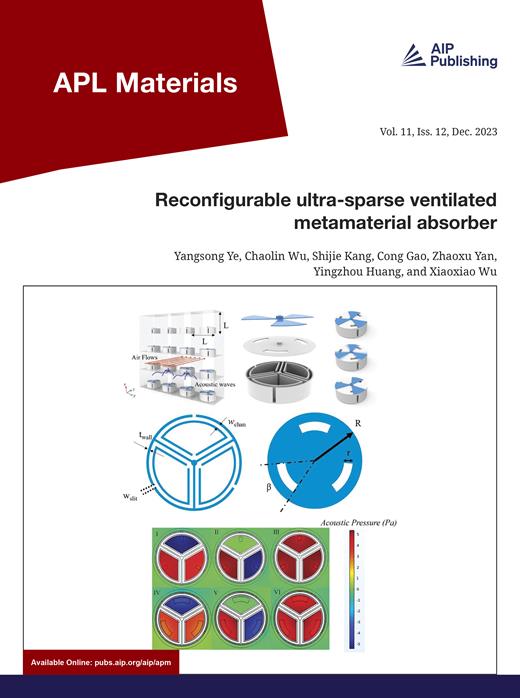神经发射模式对基于 NbOx/Al2O3 晶硅记忆器的水库计算系统的影响
IF 5.3
2区 材料科学
Q2 MATERIALS SCIENCE, MULTIDISCIPLINARY
引用次数: 0
摘要
利用电阻式随机存取存储器作为物理储层来实现储层计算,因其在并行数据处理过程中的低训练成本和高能效而备受关注。在这项工作中,通过溅射和原子层沉积工艺制造了一种基于氧化铌/氧化铝的忆阻器器件,以实现存储计算。该器件具有良好的电阻开关特性(103 个周期的耐久性),并具有电流衰减的短期记忆特性。利用电阻状态的可控性及其在循环重复过程中的可变性,应用电脉冲研究了该器件的突触激发特性。研究结果展示了电位和抑制功能、短期和长期可塑性的共存、兴奋性突触后电流以及与尖峰速率相关的可塑性。在人工突触功能的基础上,脉冲尖峰被分为三种不同的神经发射模式(正常、适应和增强),以实现 4 位存储计算,从而实现 "0 "和 "1 "之间的显著区别。本文章由计算机程序翻译,如有差异,请以英文原文为准。
Effect of neural firing pattern on NbOx/Al2O3 memristor-based reservoir computing system
The implementation of reservoir computing using resistive random-access memory as a physical reservoir has attracted attention due to its low training cost and high energy efficiency during parallel data processing. In this work, a NbOx/Al2O3-based memristor device was fabricated through a sputter and atomic layer deposition process to realize reservoir computing. The proposed device exhibits favorable resistive switching properties (>103 cycle endurance) and demonstrates short-term memory characteristics with current decay. Utilizing the controllability of the resistance state and its variability during cycle repetition, electrical pulses are applied to investigate the synapse-emulating properties of the device. The results showcase the functions of potentiation and depression, the coexistence of short-term and long-term plasticity, excitatory post-synaptic current, and spike-rate dependent plasticity. Building upon the functionalities of an artificial synapse, pulse spikes are categorized into three distinct neural firing patterns (normal, adapt, and boost) to implement 4-bit reservoir computing, enabling a significant distinction between “0” and “1.”
求助全文
通过发布文献求助,成功后即可免费获取论文全文。
去求助
来源期刊

APL Materials
NANOSCIENCE & NANOTECHNOLOGYMATERIALS SCIE-MATERIALS SCIENCE, MULTIDISCIPLINARY
CiteScore
9.60
自引率
3.30%
发文量
199
审稿时长
2 months
期刊介绍:
APL Materials features original, experimental research on significant topical issues within the field of materials science. In order to highlight research at the forefront of materials science, emphasis is given to the quality and timeliness of the work. The journal considers theory or calculation when the work is particularly timely and relevant to applications.
In addition to regular articles, the journal also publishes Special Topics, which report on cutting-edge areas in materials science, such as Perovskite Solar Cells, 2D Materials, and Beyond Lithium Ion Batteries.
 求助内容:
求助内容: 应助结果提醒方式:
应助结果提醒方式:


